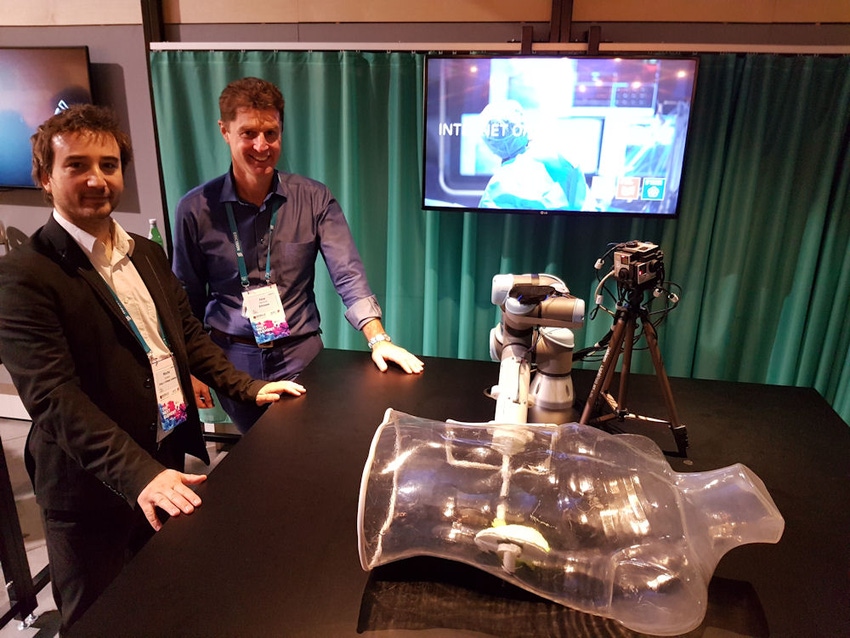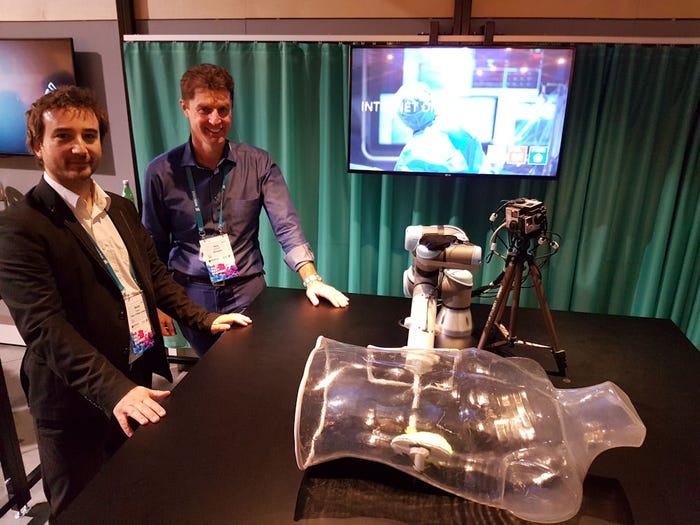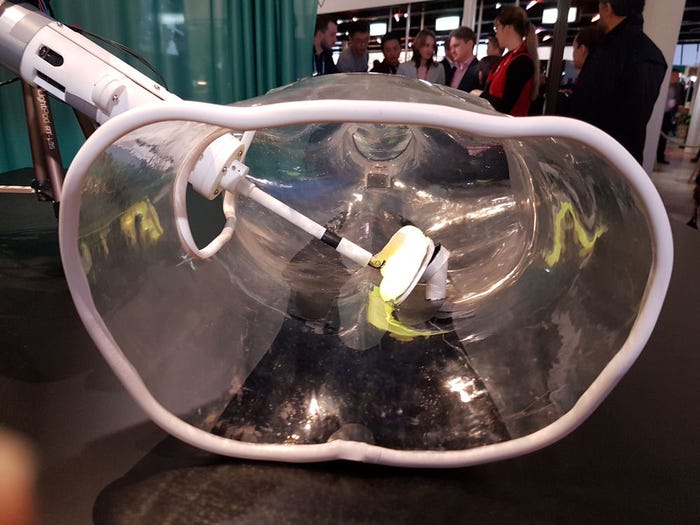Following our story expressing scepticism about all the hype around 5G we spoke to some people who are actually following through on all the utopian talk.
March 1, 2017

Following our story expressing scepticism about all the hype around 5G we spoke to some people who are actually following through on all the utopian talk.
Mischa Dohler is a Professor at King’s College London and a prominent driver of using communications technology in the medical environment. We first encountered him exactly a year ago talking about the tactile internet at an Ericsson event in King’s. He read our story bemoaning the overuse of examples like remote surgery to prematurely hype 5G and invited us to the Ericsson stand at MWC 2017 to demonstrate it’s not all hype.
Technologically the 5G hype consists of three main pillars: massively improved data throughput, low-power networks to support IoT and much lower latency (the delay between sending and receiving signals) to enable clever remote-control scenarios.
Together with Peter Marshall of Ericsson (pictured, centre) Dohler (left) demonstrated a touch-sensitive medical tool that provides haptic feedback to a remote clinician. This is used to detect early cancerous lumps under the skin of patients that might be missed by human touch alone. It is coupled with a virtual reality camera that provides a real-time visual element for the clinician.
The demo claims a latency of 10 milliseconds, which is considered acceptable for human interactions (some machine-to-machine applications are expected to need as little at 1 ms) and in order to achieve that the data cannot be compressed – hence the need for much higher bandwidth.
While Dohler was keen to show us (and our audience) that 5G isn’t all hype, he agreed that overuse of the term across the telecoms industry does run the danger of diluting the significance of genuine, exciting developments such as this. Another demo he had involved using VR for senior surgeons to teach large groups of students without having to travel all over the place, which is obviously also desirable.
As with IoT, once we get over the initial hype peak and start thinking in more measured terms about what 5G actually means it is likely to be, industrial, B2B and niche applications such as demonstrated by Dohler will be the first to come to the fore. If anything, seeing what can really be done makes it all the more unfortunate that remote surgery is in danger of becoming the next connected fridge in terms of hype justification and it was good to see there is at least some substance behind all the noise.



About the Author(s)
You May Also Like








.png?width=300&auto=webp&quality=80&disable=upscale)


_1.jpg?width=300&auto=webp&quality=80&disable=upscale)


.png?width=800&auto=webp&quality=80&disable=upscale)